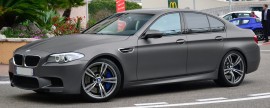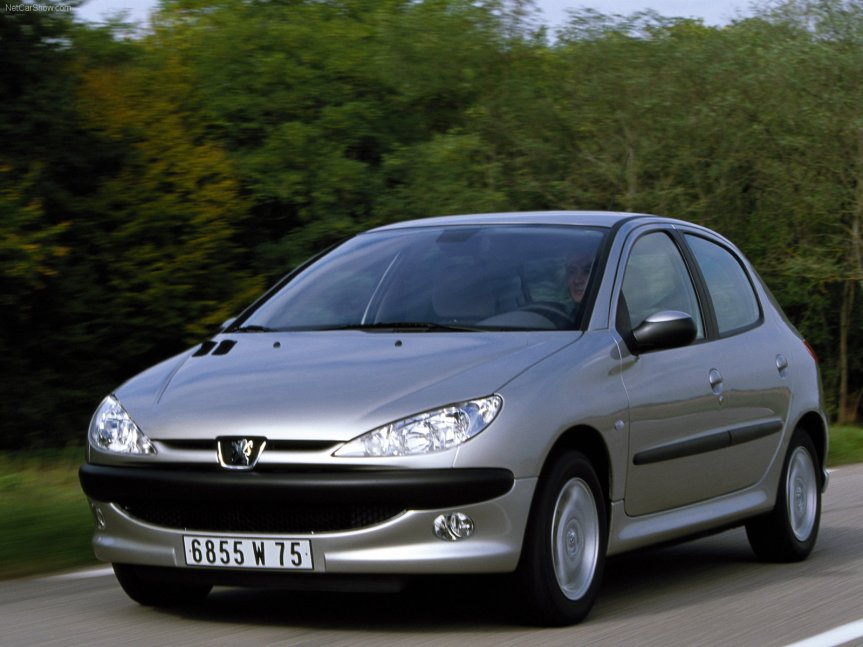 Have you ever opened the hood of your car and wondered what was going on in there? A car engine can look like a big confusing jumble of metal, tubes and wires to the uninitiated.
Have you ever opened the hood of your car and wondered what was going on in there? A car engine can look like a big confusing jumble of metal, tubes and wires to the uninitiated.
You might want to know what’s going on simply out of curiosity. Or perhaps you are buying a new car, and you hear things like “3.0 liter V-6” and “dual overhead cams” and “tuned port fuel injection.” What does all of that mean?
In this article, we’ll discuss the basic idea behind an engine and then go into detail about how all the pieces fit together, what can go wrong and how to increase performance.
The purpose of a gasoline car engine is to convert gasoline into motion so that your car can move. Currently the easiest way to create motion from gasoline is to burn the gasoline inside an engine. Therefore, a car engine is an internal combustion engine — combustion takes place internally.
Two things to note:
There are different kinds of internal combustion engines. Diesel engines are one form and gas turbine engines are another. See also the articles on HEMI engines, rotary engines and two-stroke engines. Each has its own advantages and disadvantages.
There is such a thing as an external combustion engine. A steam engine in old-fashioned trains and steam boats is the best example of an external combustion engine. The fuel (coal, wood, oil, whatever) in a steam engine burns outside the engine to create steam, and the steam creates motion inside the engine. Internal combustion is a lot more efficient (takes less fuel per mile) than external combustion, plus an internal combustion engine is a lot smaller than an equivalent external combustion engine. This explains why we don’t see any cars from Ford and GM using steam engines.
The principle behind any reciprocating internal combustion engine: If you put a tiny amount of high-energy fuel (like gasoline) in a small, enclosed space and ignite it, an incredible amount of energy is released in the form of expanding gas. You can use that energy to propel a potato 500 feet. In this case, the energy is translated into potato motion. You can also use it for more interesting purposes. For example, if you can create a cycle that allows you to set off explosions like this hundreds of times per minute, and if you can harness that energy in a useful way, what you have is the core of a car engine!
Almost all cars currently use what is called a four-stroke combustion cycle to convert gasoline into motion. The four-stroke approach is also known as the Otto cycle, in honor of Nikolaus Otto, who invented it in 1867. The four strokes are illustrated in Figure 1. They are:
- Intake stroke
- Compression stroke
- Combustion stroke
- Exhaust stroke

- You can see in the figure that a device called a piston replaces the potato in the potato cannon. The piston is connected to the crankshaft by a connecting rod. As the crankshaft revolves, it has the effect of “resetting the cannon.” Here’s what happens as the engine goes through its cycle:
- The piston starts at the top, the intake valve opens, and the piston moves down to let the engine take in a cylinder-full of air and gasoline. This is the intake stroke. Only the tiniest drop of gasoline needs to be mixed into the air for this to work. (Part 1 of the figure)
- Then the piston moves back up to compress this fuel/air mixture. Compression makes the explosion more powerful. (Part 2 of the figure)
- When the piston reaches the top of its stroke, the spark plug emits a spark to ignite the gasoline. The gasoline charge in the cylinder explodes, driving the piston down. (Part 3 of the figure)
- Once the piston hits the bottom of its stroke, the exhaust valve opens and the exhaust leaves the cylinder to go out the tailpipe. (Part 4 of the figure)
Now the engine is ready for the next cycle, so it intakes another charge of air and gas.
Notice that the motion that comes out of an internal combustion engine is rotational, while the motion produced by a potato cannon is linear (straight line). In an engine the linear motion of the pistons is converted into rotational motion by the crankshaft. The rotational motion is nice because we plan to turn (rotate) the car’s wheels with it anyway.

 The Mercedes-Benz M-Class (or ML-Class), also called Mercedes-Benz GLE-Class since 2015, is a mid-size luxury crossover sport utility vehicle (SUV) introduced in 1997, and produced by the German automaker Mercedes-Benz. In terms of size, it is slotted in between the smaller GLK-Class (based on the C-Class) and the larger GL-Class with which it shares platforms. For a short time, between 1999 and 2002, the M-Class was also built by Magna Steyr in Graz, Austria, for the European market, before all the production moved to the U.S. plant near Vance, Alabama. From late 2012, the M-Class was also assembled at new plants in Pune (India), and Wanaherang (Indonesia).
The Mercedes-Benz M-Class (or ML-Class), also called Mercedes-Benz GLE-Class since 2015, is a mid-size luxury crossover sport utility vehicle (SUV) introduced in 1997, and produced by the German automaker Mercedes-Benz. In terms of size, it is slotted in between the smaller GLK-Class (based on the C-Class) and the larger GL-Class with which it shares platforms. For a short time, between 1999 and 2002, the M-Class was also built by Magna Steyr in Graz, Austria, for the European market, before all the production moved to the U.S. plant near Vance, Alabama. From late 2012, the M-Class was also assembled at new plants in Pune (India), and Wanaherang (Indonesia). Mercedes-Benz proposed a plan to replace the G-Class, which at the time had been in production for 11 years. A joint agreement with Mitsubishi Motors to develop and produce a sports-utility vehicle was made in early 1991 and was confirmed publicly that June. Plans were made to base it on the Montero/Pajero platform, with one of them being badged as a Mercedes-Benz and the other a Mitsubishi. In May 1992, these plans were abandoned citing “technical problems” and Mercedes-Benz continued on with in-house development from January 1993.[5][6] In March 1993, a search for a location to build a U.S. manufacturing plant began. By September 1993, a location in the state of Alabama was chosen and construction started in 1994. While plans were being made overseas, in Germany development continued. Design work took place from late 1992 to 1994. A design from Mercedes’ Sindelfingen studio was chosen in 1993 and approved by the executive board in February 1994. The design patents were filed in Germany on July 13, 1994, and in the U.S. on January 13, 1995. Prototype testing started with test mules and crash tests using mock-ups in May 1994. First functional prototype’s crash test took place in February 1995, with full testing run from March 1995 to December 1996 in various climates and regions of the world. Pilot production began in May 1996. In July 1996, construction on the Mercedes-Benz U.S. International plant concluded, with the very first production M-Class rolling off .
Mercedes-Benz proposed a plan to replace the G-Class, which at the time had been in production for 11 years. A joint agreement with Mitsubishi Motors to develop and produce a sports-utility vehicle was made in early 1991 and was confirmed publicly that June. Plans were made to base it on the Montero/Pajero platform, with one of them being badged as a Mercedes-Benz and the other a Mitsubishi. In May 1992, these plans were abandoned citing “technical problems” and Mercedes-Benz continued on with in-house development from January 1993.[5][6] In March 1993, a search for a location to build a U.S. manufacturing plant began. By September 1993, a location in the state of Alabama was chosen and construction started in 1994. While plans were being made overseas, in Germany development continued. Design work took place from late 1992 to 1994. A design from Mercedes’ Sindelfingen studio was chosen in 1993 and approved by the executive board in February 1994. The design patents were filed in Germany on July 13, 1994, and in the U.S. on January 13, 1995. Prototype testing started with test mules and crash tests using mock-ups in May 1994. First functional prototype’s crash test took place in February 1995, with full testing run from March 1995 to December 1996 in various climates and regions of the world. Pilot production began in May 1996. In July 1996, construction on the Mercedes-Benz U.S. International plant concluded, with the very first production M-Class rolling off . The Audi R8[9] (Typ 42)[11] is a mid-engine, 2-seater super car,[9][12] which uses Audi’s trademark quattro permanent all-wheel drive system.[9][13] It was introduced by the German automaker Audi AG in 2006.
The Audi R8[9] (Typ 42)[11] is a mid-engine, 2-seater super car,[9][12] which uses Audi’s trademark quattro permanent all-wheel drive system.[9][13] It was introduced by the German automaker Audi AG in 2006. The 206 is a supermini carthat was produced by the French manufacturer Peugeot from 1998 to 2010. Even though the 206 had finished production in most markets by 2010, in Europe it was available as the 206+, with front and rear styling that resembles the Peugeot 207, until 2012, whereas in South America[nb 2] it continues to be offered under the 207nameplate,[6] and furthermore in China, both under the 207 nameplate and as the Citroën C2.[7]
The 206 is a supermini carthat was produced by the French manufacturer Peugeot from 1998 to 2010. Even though the 206 had finished production in most markets by 2010, in Europe it was available as the 206+, with front and rear styling that resembles the Peugeot 207, until 2012, whereas in South America[nb 2] it continues to be offered under the 207nameplate,[6] and furthermore in China, both under the 207 nameplate and as the Citroën C2.[7]

 The first generation Gallardo came with an even firing 5 litre 90 degree V10 (4961cc). The Gallardo offers two choices of transmissions, a conventional (H-Box) six-speed manual transmission, and an advanced six-speed electro-hydraulically controlledsemi-automatic robotized manual, which Lamborghini abbreviates to “E-gear”. The “E-gear” allows the driver to make shifts much faster than they could with a manual transmission. The driver shifts up and down via paddles behind the steering wheel, but can also change to an automatic mode.[3] The vehicle was designed by Luc Donckerwolke and was based on the 1995 Calà prototype by Italdesign Giugiaro.
The first generation Gallardo came with an even firing 5 litre 90 degree V10 (4961cc). The Gallardo offers two choices of transmissions, a conventional (H-Box) six-speed manual transmission, and an advanced six-speed electro-hydraulically controlledsemi-automatic robotized manual, which Lamborghini abbreviates to “E-gear”. The “E-gear” allows the driver to make shifts much faster than they could with a manual transmission. The driver shifts up and down via paddles behind the steering wheel, but can also change to an automatic mode.[3] The vehicle was designed by Luc Donckerwolke and was based on the 1995 Calà prototype by Italdesign Giugiaro.
